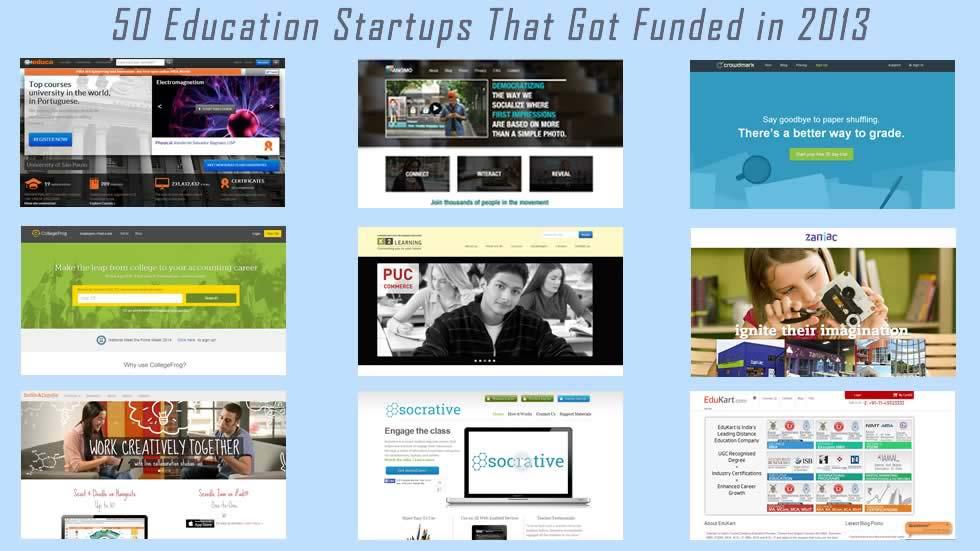But a pervasive narrative in the mainstream media is that Americans are a people beset by near-continuous crisis, whether it’s the fake crisis of a looming “fiscal cliff” or a real crisis like Frankenstorm Sandy that still has many Northeasterners inexplicably living in the dark in unheated homes.
Arguably no sector of American society has been cast with the narrative of crisis as much as public education. And the fever pitch is about to go higher.
Something’s Rotten In The State Of Kentucky
Just prior to the November election, an article in the education trade journal Education Week broke that Kentucky had gotten bad news back from its most recent round of school tests. The results were that the percent of students scoring “proficient” or better in reading and math had dropped by roughly a third or more in both elementary and middle schools.
Disappointing results from a state test is not usually an occasion to stop the presses. But, in this case it was, because these were Very Special Tests.
The tests Kentucky children took were brand-new and aligned to new standards promoted by the federal government called Common Core Standards. Kentucky is the very first state to implement the new standards-based assessments, which will be rolled-out in over 40 other states over the next two school years.
Kentucky school officials, who were already bracing for the bad results, tried putting a happy face on it, calling results “better than we thought they’d be.”
But local media outlets were quick to claim that lower scores were proof positive that Kentucky public schools are “in need of improvement.”
Now imagine the scenario when what happened in Kentucky begins rolling out across the country — as state after state implements the bright, shiny new tests and watches in horror as scores drop off “The Proficiency Cliff.” How tempting it will be for major media outlets across the country to cast this as a “crisis” in education?
In fact, some people are betting good money on that happening.
Business Loves A Crisis
This past summer, about 100 private equity investors gathered at the posh University Club in New York City to hear about big money-making opportunities on the horizon.
As reported in Huffington Post, Rob Lytle of The Parthenon Group, a “strategic advisor of choice for CEOs and business leaders worldwide” according to its website, was there to reveal the ripening profit potentials in the public education arena — a $500+ billion market –due to the roll-out of new assessments aligned to the Common Core.
According to the reporter, Lytle told the audience, if the tests are “as rigorous as advertised, a huge number of schools will suddenly look really bad, their students testing way behind in reading and math. They’ll want help, quick. And private, for-profit vendors selling lesson plans, educational software and student assessments will be right there to provide it.”
Recall that states were strongly urged to adopt the new standards when they applied for the US Department of Education’s Race to the Top grant program and for waivers to the onerous No Child Left Behind mandates. Now 46 states are implementing the standards and at least one form or another of the tests that are aligned to the standards. The intent of the standards and tests is to ensure that students are on a pathway to becoming “career and college ready” (CCR) by the time they graduate high school.
So how is this a business opportunity?
Lytle regaled his investor friends with how the new tests would identify the “performance gaps” in student achievement where results fall far below what’s considered “proficient.” And once the Performance Gaps are unveiled to the world, the resulting pressure will force school officials into hiring outside product and service providers to bring up the scores.
As reported in Education Week, he accompanied his remarks with a Powerpoint (available at the link) with a graph showing which states are more apt to have the Performance Gaps. On his graph were a lot of states that he anticipated would be in “high need” of closing the Gap, including Colorado, Georgia, Illinois, Michigan, New York, Tennessee, Texas, and Virginia.
Ed Week’s reporter explained, “Simplifying the picture as Mr. Lytle did gave investors hope that a sector they see as traditionally fickle and recently bearish might not be so bad.”
Interestingly, Kentucky was one of the few “low-need” states where the Performance Gap was not evident. So with a low-need state like Kentucky experiencing a 30 percent drop in test scores, does that mean states with high-need will experience even steeper drops?
Crisis material for sure.
Going From Crisis To Crisis
Education historian Diane Ravitch has long observed that a persistent narrative in the media is that American schools are “in crisis.”
A year ago, writing in The New York Review of Books, Ravitch traced the education crisis narrative back to a century ago, “when urban schools were overcrowded, swamped with students from Eastern and Southern Europe who didn’t speak English.” Again, in the 1950s, crisis broke out when the Soviets launched Sputnik into orbit, and critics blamed our public schools for not cranking out enough scientists.
The late Gerald Bracey noted this as well and coined the term “Sputnick Effect” to describe the perpetual state of crisis that has characterized the media narrative about the nation’s public schools. Bracey wrote:
The schools never recovered from Sputnik. Sputnik wounded their reputation and, as the scab formed, something else always came along to reopen the lesion: In the 1960s, schools were blamed for the urban riots (but were not credited for putting a man on the moon). In the 1970s, they were seen as “grim and joyless”. . . In the 1980s, A Nation at Risk blamed them for allowing the Germans, the South Koreans, and the Japanese to race ahead of us competitively (yet did not credit them for the longest sustained economic expansion in the nation’s history).
Indeed, what will keep politicians and the media from picking at the scab again?
Who Wants A Crisis?
Is an education crisis good for business? As the Ed Week reporter cited above pointed out, “There are market trends that support that theory. The commercial education market grew significantly in the past four years, but no segment grew faster than instruction and services. Companies like the virtual learning providers K12 Inc. and Connections Academy, or the publishers-turned-service-providers Pearson and Houghton Mifflin Harcourt, fit that bill.”
In fact, the Obama administration originally framed the Common Core standards, and all the trappings that would come along with them, as a great business opportunity.
Writing at the blog site of the Harvard Business Review, Joanne Weiss, the Chief of Staff to Secretary of Education Arne Duncan and leader of the Obama administration’s Race to the Top program, said
The development of common standards and shared assessments radically alters the market for innovation in curriculum development, professional development, and formative assessments. Previously, these markets operated on a state-by-state basis, and often on a district-by-district basis. But the adoption of common standards and shared assessments means that education entrepreneurs will enjoy national markets where the best products can be taken to scale.
That “national market” has in fact come to pass. And educator Michael Moore has connected the dots. Writing at the Savannah Morning News, he explained (hat-tip Maureen Dowd)
The testing business is a $2.3 billion business. But testing is not where the real money is made. If you want to pass the test, you’re going to need preparation materials.
If your child brings home a text from Glencoe, Macmillan, SRA, Open Court or The Grow Network, among others, then your child is using a McGraw-Hill text. The test preparation materials business surely dwarfs the testing business.
This is still small beer compared with what’s to come. This week, the Bill & Melinda Gates Foundation and the Pearson Foundation (a non-profit organization owned by, well, the for-profit version of the Pearson company) announced that the two were working together to create complete online curricula for the new common core standards in math and English language arts for elementary through high school.
This off-the-shelf curricula includes the materials, the teacher preparation, teacher development and, of course, the assessments.
Interestingly, Phil Daro and Sally Hampton from America’s Choice, who helped draft the common core standards, are heading up this development.
Confused? Did I forget to mention that Pearson bought America’s Choice last summer?
There are, of course, other theories about the “what’s behind the Common Core” phenomenon. Rick Hess of the American Enterprise Institute had a particularly interesting one last week when he spilled the beans on what’s going on among The Very Serious People in Washington, DC. “When I ask how exactly the Common Core is going to change teaching and learning,” he divulged, “I’m mostly told that it’s going to finally shine a harsh light on the quality of suburban schools, shocking those families and voters into action.”
Apparently, this Shock Doctrine for the suburbs will play out so:
First, politicians will actually embrace the Common Core assessments and then will use them to set cut scores that suggest huge numbers of suburban schools are failing. Then, parents and community members who previously liked their schools are going to believe the assessment results rather than their own lying eyes . . . Finally, newly convinced that their schools stink, parents and voters will embrace “reform.”
Whether the coming Education Crisis is a business conspiracy or a Beltway scheme, none of this is to argue that the Common Core and its accompanying tests and instructional materials aren’t without merit. That’s a whole other subject.
But since when did a crisis-driven directive, steered by business interests and bureaucrats who aren’t being exactly transparent about their intentions, ever end up achieving widespread public good?
Good Intentions Gone Awry?
No doubt there are some good intentions driving the new standards and tests.
But some of those intentions seem extraordinarily naïve. In an article from this week’s US News, chief architect of the Common Core David Coleman maintained that the new tests are so much better than the ones we’ve been using that, even if they demoralize teachers and frustrate parents, they will “redeem assessment” in their “hearts and minds.”
So, let’s see how that plays out:
Dear High School Parent,
For years, we’ve been telling you your child is bright and successful in school. But those tests sucked. Now, we’ve got new and better tests, and they have determined that your child is a failure. Enjoy the rest of your day!
Good intentions are not always what matter. In fact, they often blind.
When the last Great Big Education Innovation called No Child Left Behind descending on America’s beleaguered schools, the intention was to address a Crisis as well. That Crisis also had its very own Gap — not the Performance Gap, but the Achievement Gap.
NCLB was supposed to close the Achievement Gap, but it’s now widely understood that the whole enterprise was an utter failure. The best that NCLB proponents can offer is that it “woke the country” to the stark differences between the academic attainment of African American and Hispanic school children and their white and Asian peers.
But years of results from the National Assessment of Education Progress had already revealed those differences, and anyone who needed “awakening” then has doubtless fallen back into slumbers as the country has drifted further and further into a vast sea of segregated schools and education inequality.
So now one crisis-prompted experiment on the nation’s school children is leading to another.
One wonders, when will Americans — after being shocked into concern about an Achievement Gap and cattle-prodded to address a Performance Gap — tire of crisis language and notice that the real problem is that political leaders and “experts” in charge of education policy have a Credibility Gap?

















